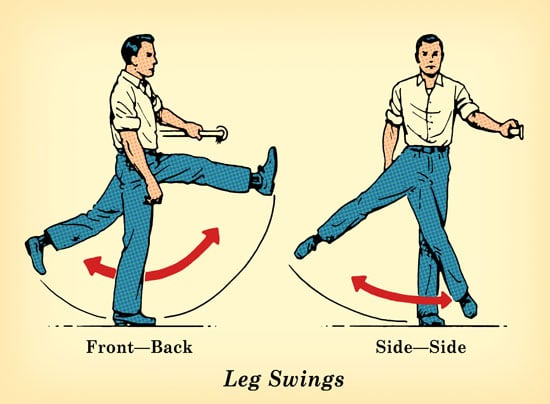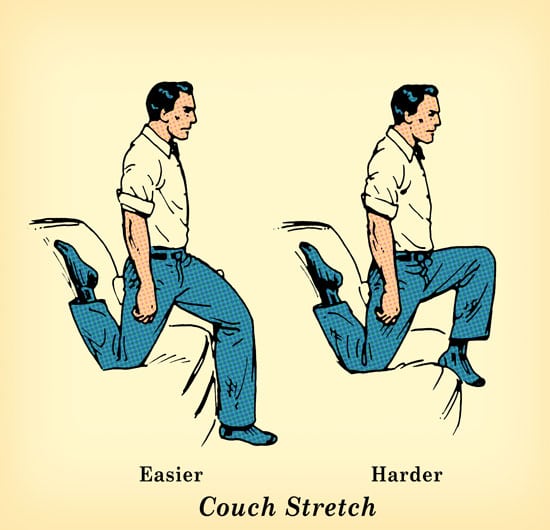We all know by now how bad sitting for long amounts of time is for our bodies. If you don’t watch this TED Talk about our Primal Posture first.
Find your primal posture and sit without back pain: Esther Gokhale at TEDxStanford
Summary:
– Imagine we have tails and our tails should be behind us not under us.
– Your muscles and bones stack so easily that it’s like you’re getting a massage the whole day and healing yourself.
– It all starts when we’re babies by the way we are carried or sat in the car seat which is really bad and feeds the muscle memory.
– If you see the non-industrial population they have a J shaped spine. Back straight and behind is behind.
– Exercise at 4:24 time mark in the video.
Tips to Undo the Damage of Sitting
– Sit less and move more. Get standing desks but remember that extended periods of standing is not good for you either.
– Squat. See below for more on sqatting.



– Activate your glutes with barbell bridges, clamshells and fire hydrants. For more instructions go to 7 Simple Exercises That Undo the Damage of Sitting
Undoing the Damage of Chronic Sitting
Summary of the podcast:
– First of all Kelly Starrett’s style of talking was pretty funny to me and at some point even Brett started saying ‘stinkin’ 20:21 in the time marker. Highly recommended for the knowledge and some genuine laughs that were out loud.
– Back in the day of real manliness we used to be generalists not hyper-specialists.
– Practice makes permanent and we’ve been doing the wrong practice. Look at the difference of spines in say ballet classes and offices.
– We are not built to be sedentary. Paras note: I heard somewhere that the body loves to move which was my first steps towards sitting around less.
– Squatting with your heels on the ground is our natural position. Look at the non-industrial tribes and you’ll see them squatting naturally. I used to make fun of that posture, now I’m in that posture whenever I can or feel like I need a stretch.
– Just the change in posture will change other things like mood, breathing, etc.
– You can reverse obesity by standing.
– Exercise: Start by standing for just an hour. Then start standing more. “if you’ve ever been to a bar, there are these places called pubs where you can get alcohol served to you. It’s amazing.” Anyway so pubs have this bar on the ground for you to stand and place your feet. You should be changing your shape when your body tells you, just don’t slouch.
– After kids tried standing desks they didn’t want to go back to sitting and their engagement went up 12-14%.
– The highest number of musculoskeletal injuries are the office workers. Chevron has a gong that goes off every 20 minutes for people to move around.
– When you see ‘support’, it means that part of your body is going to become weaker. Ergonomic chairs were designed for people with issues to reduce bedsores, compression and tissue ulcers, etc. Your hamstrings are not for sitting, use your sit bones – the edge of the chair and femurs should be hanging off. Stools would be great.
Squatting: Solving Problems Cause by Sitting

Summary:
The problem with the West is they don’t squat.
– The failure to squat has biomechanical, physiological implications and has left us bereft of the grounding force that squatting has provided.
– A large population of the planet still squats – while eating, working, resting, praying and of course pooping. It’s associated with the most fundamental part of life – Birth.
We need to stop thinking of squatting as undignified and uncomfortable. It’s not that you can’t comfortably sit in a deep squat, it’s just that you’ve forgotten how
– Deep squatting as a form of active rest is built in to both our evolutionary and developmental past.
– Osteopath Phillip Beach pioneered the idea of archetypal postures, which also include sitting cross legged and kneeling on one’s knees and heels. They are not only good for us but also deeply embedded into the way our bodies are built.
– Dr. Bahram Jam, a physical therapist and founder of the Advanced Physical Therapy Education Institute (APTEI) in Ontario, Canada says “Every joint in our body has synovial fluid in it. This is the oil in our body that provides nutrition to the cartilage. Two things are required to produce that fluid: movement and compression. So if a joint doesn’t go through its full range—if the hips and knees never go past 90 degrees—the body says ‘I’m not being used’ and starts to degenerate and stops the production of synovial fluid.” “It’s considered primitive and of low social status to squat somewhere,” says Jam. “When we think of squatting we think of a peasant in India, or an African village tribesman, or an unhygienic city floor. We think we’ve evolved past that—but really we’ve devolved away from it.”
– Test subjects who showed difficulty getting up off the floor without support of hands, or an elbow, or leg AKA “sitting-rising test” resulted in a three-year-shorter life expectancy.
– Toilet design changed our squatty ways. Greater hip flexion meant less straining to relieve ourselves. Tudors of Britain adopted something called grooms of the stool. Back in the day you would have squatted 5-6 times a day just going to the loo. Etiquette and the modern wardrobe don’t help these days either. Paras note: I still sit cross legged on the chair as long as it’s comfortable enough and only my workmates can see.
– Avni Trivedi, a doula and osteopath based in London says the same is true of squatting as a birthing position, which is still prominent in many developing parts of the world and is increasingly advocated by holistic birthing movements in the West. “In a squatting birthing position, the muscles relax and you’re allowing the sacrum to have free movement so the baby can push down, with gravity playing a role too,” Trivedi says. “But the perception that this position was primitive is why women went from this active position to being on the bed, where they are less embodied and have less agency in the birthing process.”
– Remember any poster held for too long causes problems and the people who have been squatting for hours have higher incidences of knee and osteoarthritis issues. But for those of us who haven’t been squatting, we can’t overdo it. Being on the ground helps us get grounded.
Bonus: Sitting is Killing You … from Mukund and Safe Cycling Australia
Bonus: The Science of Standing Desks … thanks Choppy
Bonus: Sitting: The Silent Addiction | Pritam Poddar | TEDxRIT
Bonus: Sit smarter, not harder: Scott Donkin at TEDxLincoln
Amazon #ads





